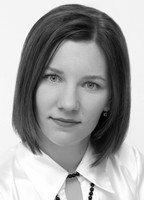Physiological responses of athletes to rhythmic loads
Фотографии:
ˑ:
Teoriya i praktika fizicheskoy kultury №10 2017, pp.91-92
Yu.G. Kalinnikova1
PhD, Associate Professor E.S. Inozemtseva1
Dr.Med., Professor L.V. Kapilevich1, 2
1National Research Tomsk State University, Tomsk
2National Research Tomsk Polytechnic University, Tomsk
Objective of the study was to rate effects of variable rhythmic loads on the athlete's functional status. It was demonstrated that the physiological and psycho-physiological responses to physical loads in the female athletes engaged in aerobics are largely dependent on the rhythm and pace of the musical illustration, with the latter found to contribute to the coherence of the electrical activity in the cerebral cortex. On the other hand, physical loads under inappropriate rhythm and pace of the musical illustration were found to suppress the coherence. Forecast algorithms for the psycho-physiological responses under variable physical loads need to be developed with due consideration for the primary body functional state; and the algorithms could be beneficial for the training process efficiency improvement via better mobilisation of the bodily resources; higher resistance to physical and mental loads; and faster adaptation to variable external environments. Health improvement aerobics may facilitate the trainees’ progress conditional on the following: prudent design of the training sessions with their elements focused on different functionality aspects; perfect execution techniques with due load management; and encouraging musical illustration with the appropriate rhythm and pace.
Keywords: rhythmic load, aerobics, electromyography.
References
- Kiroy V.N., Belova E.I. Mekhanizmy formirovaniya i rol ostsillyatornoy aktivnosti neyronnykh populyatsiy v sistemnoy deyatelnosti mozga [Mechanisms of formation and role of oscillatory activity of neural populations in brain systemic activity]. Zhurnal vysshey nervnoy deyatelnosti, 2000, vol. 50, no. 2. pp. 179-191.
- Melnikova T.S., Lapin I.A., Sarkisyan V.V. Obzor ispolzovaniya kogerentnogo analiza EEG v psikhiatrii [Coherent EEG analysis in psychiatry: utilization review]. Sotsialnaya i klinicheskaya psikhiatriya, 2009, no. 1, pp. 90-94.
- Fedotchev A.I., San Chzhun O, Semikin G.I. Sochetanie tekhnologii EEG-bioupravleniya s muzykalnoy terapiey dlya effektivnoy korrektsii stress-vyzvannykh rasstroystv [Combination of EEG-bio-management technology with music therapy for effective correction of stress-induced disorders]. Sovremennye tekhnologii v meditsine, 2014, vol. 6, no. 3, pp. 60-63.
- Angelopoulos E. Brain functional connectivity and the pathophysiology of schizophrenia. Psychiatriki. 2014 Apr-Jun;25(2):91-4. English, Greek, Modern.PubMed PMID: 25035177.
- Bahar Güntekin, Erol Başar Review of evoked and event-related delta responses in the human brain. Int J Psychophysiol. 2015 Feb 7. pii: S0167-8760(15)00031-8. doi: 10.1016/j.ijpsycho.2015.02.001.
- Kalinnikova Yu. G., Inozemtseva E. S., Galazhinskiy E. V., Kapilevich L. V. Vliyanie ritmicheskikh nagruzok na formirovanie kogerentnykh svyazey v strukturakh mozga i variabelnost serdechnogo ritma [Effects of rhythmic workloads on coherent communication being formed in cerebral structures and on heart rate variability]. Teoriya i praktika fizicheskoy kultury, 2016, no. 10, pp. 83–85.
- Kalinnikova Yu. G., Inozemtseva E. S., Galazhinskiy E. V., Balanev D. Yu., Kapilevich L. V. Kogerentny analiz EEG pri fizicheskikh nagruzkakh i zvukovom soprovozhdenii razlichnoy ritmotempovoy struktury [Analysis of EEG Coherence Effects of Physical Loads and Rhythmic Auditory Stimulation]. Teoriya i Praktika Fizicheskoy Kultury, 2015, no. 11, pp. 36–38.
- Kalinnikova Yu. G., Inozemtseva E. S., Galazhinskiy E. V., Balanev D. Yu., Kapilevich L. V. Vliyanie fizicheskikh nagruzok i zvukovogo soprovozhdeniya razlichnoy ritmo-tempovoy struktury na bioelektricheskuyu aktivnost golovnogo mozga [Effect of exercise and sound accompaniment with different rhythm and tempo on brain bioelectrical activity]. Teoriya i Praktika Fizicheskoy Kultury, 2015, no. 7, pp. 5–7.
- Obayashi S., Subara T., Kwabe K., Okauchi T., Maeda J., Akine Y., Onoe H., Iriki A. Functional Brain Mapping of Monkey Tool Use. Neuroimage. 2001. 14.4. 853-861.



 Журнал "THEORY AND PRACTICE
Журнал "THEORY AND PRACTICE